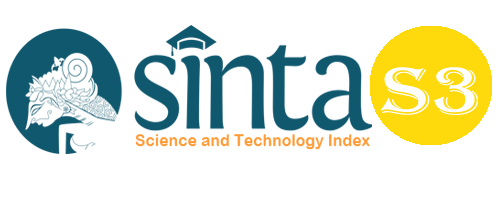Guidelines for Da'wah Bilhikmah of the Indonesian Ulema Council in Dealing with Hoaxes on Social Media
Abstract
Da'wah bilhikmah is a message that is able to guide people in tracing the traces of the glory of life and high civilization, so that humans become dignified (akramal akramin). The description of the da'wah bilhikmah in the Qur’an can be carried out by preachers / preachers who have wisdom, namely those who are called ulil ilmi and ulil albab who are always devoted (reflecting), tafakkur (deep thinking), polite in attitude ( hilm), fair in deciding and progressive in truth (I'tiba). In this research, the writer tries to get library material, namely collecting, reading and reviewing sources, getting library research in the form of books or the realities of everyday life of the people related to the issues discussed. The method of discussion in this research are: Synthesis Analysis Method, namely through rational and abstract logical approaches to the objective of inductive and deductive thinking and scientific analysis. Descriptive method, namely by describing the ongoing and developing social reality which is then associated with the issue of da'wah and its scope. In writing this journal, sociology theory states that humans develop religion (religion) because of the vibrations of the soul and religious emotions that arise due to the influence of social feelings. Namely by describing the ongoing and developing social reality which is then associated with the issue of da'wah and its scope. In writing this journal, sociological theory states that humans develop religion (religion) because of the vibrations of the soul and religious emotions that arise due to the influence of social feelings. Namely by describing the ongoing and developing social reality which is then associated with the issue of da'wah and its scope. In writing this journal, sociology theory states that humans develop religion (religion) because of the vibrations of the soul and religious emotions that arise due to the influence of social feelings.
Keywords
Full Text:
PDFReferences
Abdurrahman Abu Syaikh. (2009).Tafsir Ibnu Katsir.(Jakarta: Pustaka Iman Asy-Syafi‟i).
Amsal Bakhtiar. (1999). Filsafat Agama (Jakarta: Logos Wacana Ilmu).
Achmad AS. (2002). Media Massa dan Khalayak (Makassar: Hasanuddin University Press).
Deliar Noer. (2003). Islam & Politik, (Jakarta: Yayasan Risalah).
Hadi Mutamam. (2001). Hikmah dalam al-Qur’an (Yogyakarta: Madani Pustaka Hikmah..
Harun Nasution. (1985). Islam ditinjau dari berbagai aspeknya, Cet V, Jilid I, (Jakarta: UI Pers).
Hasan Al Banna. (1984). Majmu’ah Rasail, al Mu’assasah al Islamiyah, (Beirut: Tp), hal. 18
Hasibuan, S. et al. (2019). The Effect of Health and Religious Beliefs on Consumer Consciousness of Using Halal Cosmetics. Budapest International Research and Critics Institute-Journal (BIRCI-Journal). P. 239-249
Lois Ma’luf. (1986). Al-Munjid fī al-Lugah wa al-A’lam (Beirut: Dar el-Machreq), 593.
Mawardi et al, (2019). Agenda Empowerment of People in Tarmizi Taher Point of View. Budapest International Research and Critics Institute-Journal (BIRCI-Journal). P. 443-450.
Muhammad Arifin. (2002). Psikologi Dakwah, Jakarta : Bumi Aksara.
M. Quraish Shihab. (2007). Secercah Cahaya Ilahi Hidup bersama Al-Qur‟an, (Bandung: Mizan).
M. Quraish Shihab. (2007). Ensiklopedia al-Qur’an: Kajian Kosa Kata (Jakarta: Lentera Hati)
Piötr Sztompka. (2005). Sosiologi Perubahan Sosial. terj. Alimandan (Jakarta: Prenada)
Sari, A. et al. (2019). The Concept of Tolerance among Religious Community by the Religious Activists of Interfaith Community and Pantura Belief (Tali Akrap). Budapest International Research and Critics Institute-Journal (BIRCI-Journal). P. 132-142
Thohir Luth, M. Natsir. (1999). Dakwah dan Pemikirannya, Cet I, (Jakarta: Gema Insani Press).
Zain al-Dīn Abī al-Faraj ibn Rajāb al-Hambalī, Fatḥ al-Bāri’ bi Syarḥ al-Bukhāri, Jilid 1 (Madinah : Maktabat al-Ghuraba.
Zain al-Dīn Abī al-Faraj ibn Rajāb al-Hambalī, Fatḥ al-Bāri’ bi Syarḥ al-Bukhāri, Jilid 1 (Madinah : Maktabat al-Ghuraba).
DOI: https://doi.org/10.33258/birci.v4i1.1541
Article Metrics
Abstract view : 127 timesPDF - 91 times
Refbacks
- There are currently no refbacks.

This work is licensed under a Creative Commons Attribution-ShareAlike 4.0 International License.

This work is licensed under a Creative Commons Attribution-ShareAlike 4.0 International License.

_.gif)

















_.gif)



